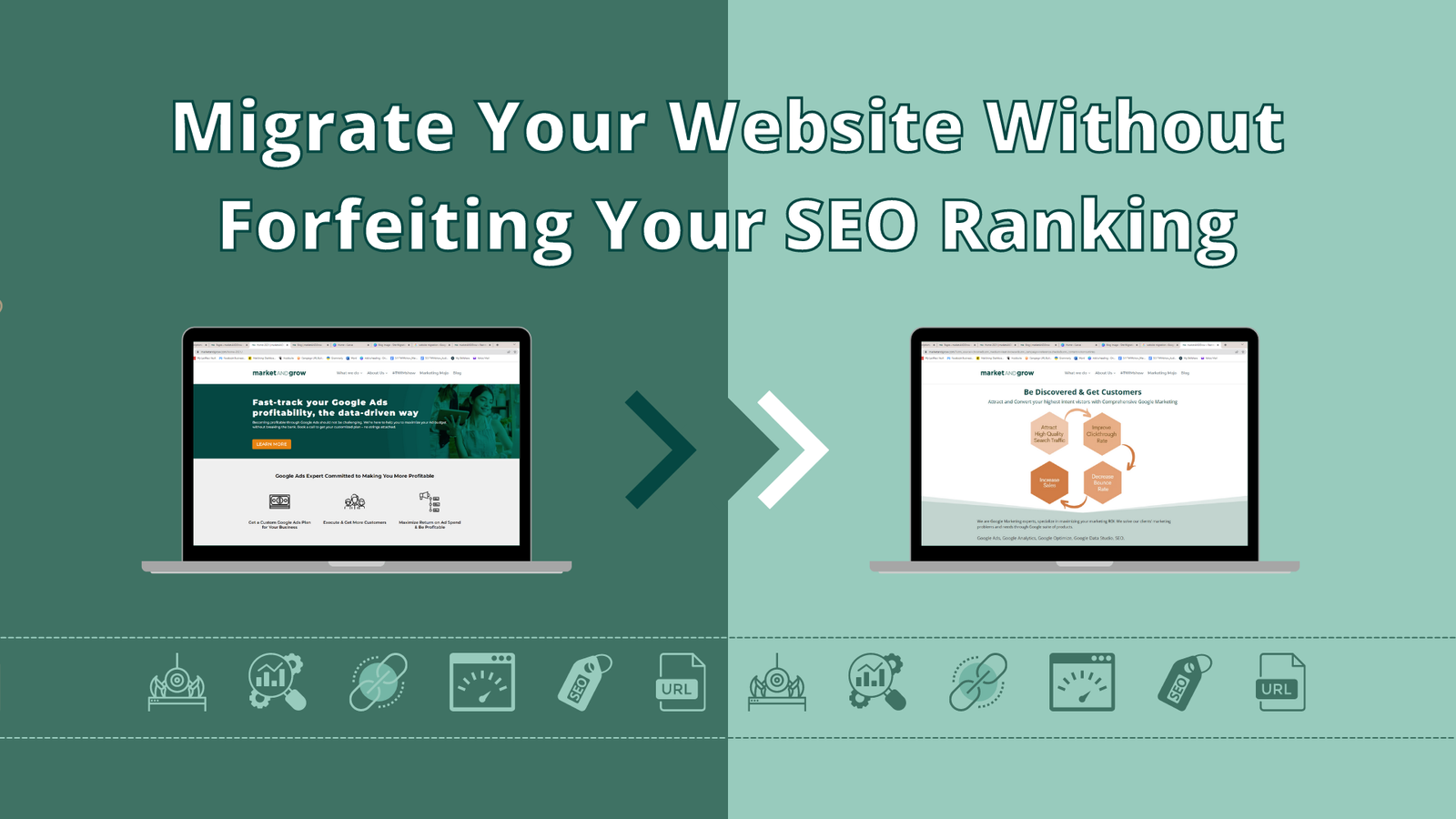We’ve all been there before. Your brand changes and you want to change your domain name. You have design upgrades to make to your website. So you need a site migration. But, with all the moving pieces and potential for errors, your SEO ranking, and traffic drop dramatically if you’re not careful. Any migration is a serious project that has many stakeholders.

Major Risks of Site Migration
It only takes a few missteps to tank a site’s keyword rankings and organic search traffic. These are the most common errors that can occur during site migration:
Content errors: Duplicate content and broken redirects, all of which hurt SEO ranking so your content is no longer easily found on search engines.
Website errors: One of the worst mistakes is when a visitor clicks on an old URL and gets a 404 error code. Over 73% of visitors will leave a website if they see this error code, which can cost you a lot of lost traffic.
Weigh the pros and cons of migrating your website and only do it if it is absolutely necessary for the changes you want to make.
What’s the best way to approach website migration without forfeiting your SEO rankings?
Here is a checklist to use when migrating your website:
- Make a list of all current URLs to establish a baseline to use as a comparison with your new site. Check each URL for error codes or redirect chains and address these errors before transfer.
- Take note of the following metrics for your baseline: organic traffic, organic rank, pages crawled, indexable URLs, site structure, and site speed. Use these as a comparison benchmark for your new site.
- Check a backup website. If something goes wrong during the migration, you still have an old website to fall back on.
- Plan the navigation of the new website. Make sure content is ranked the most effective through the format and hierarchy of pages.
- Perform a technical SEO audit on the prototype website. This includes checking for easy navigation, page loading times, alt text for images, and clean URLs.
- Create an inventory of all of your existing content. If any document becomes lost during the migration process, you will be able to re-upload before any major damage has been done.
- Check canonical link tags, which is a tag that defines which page is the main version for sites with duplicate or similar pages. This will allow Google to make a ranking decision for pages with similar content, so your outdated page doesn’t end up showing up first on the search engine.
- Check web accessibility for users with disabilities if you are making major design or UX changes.
- Migrate meta elements, such as title tag and meta description. These elements have SEO value and can contribute to higher ranking and traffic.
- Create 301 Redirects to pass along old URLs to a new URL location. This will prevent broken links where the customer may become frustrated and leave the page.
- Perform a full website crawl to identify errors or broken links.
- Test all contact forms and thank you pages. Ensuring that leads have a way to reach you is important after the traffic from your website has increased.
- Check your analytics tags to make sure you are able to track and report on page visits.
- Monitor indexed pages. Your pages likely won’t all become indexed until a few months down the road, but check to make sure the indexed page count is the same as the old site after time has passed.
- Update PPC campaigns. If you are running PPC campaigns, update the links to the corresponding pages on your new website in order to ensure there is no break in reporting. Take note of your Quality Score on Google Ads to see if it has been affected.
Common Pitfalls
The most common mistakes made during site migration include poor strategy and planning. Business owners should factor in additional time and resources to plan for unforeseen circumstances. In addition, avoid planning a site migration during peak seasons, to avoid a major loss of revenue if something goes wrong. Slow response to bug fixing can sacrifice user traffic for every additional hour that it occurs. Buffer in additional resources and money for the project in order to be able to quickly address any issues as they arise.
Many people fail to establish measurable objectives in order to quantify the result of the post-migration site. Common objectives include retaining and growing the site’s current traffic. Attention to detail is very important, and every decision needs to be made from both a UX and SEO standpoint.
Site migrations are complex to navigate, but with this checklist and careful planning, you can enjoy the benefits of a new website without the pitfalls. Still need guidance? Book a discovery call with us today so we can help.

